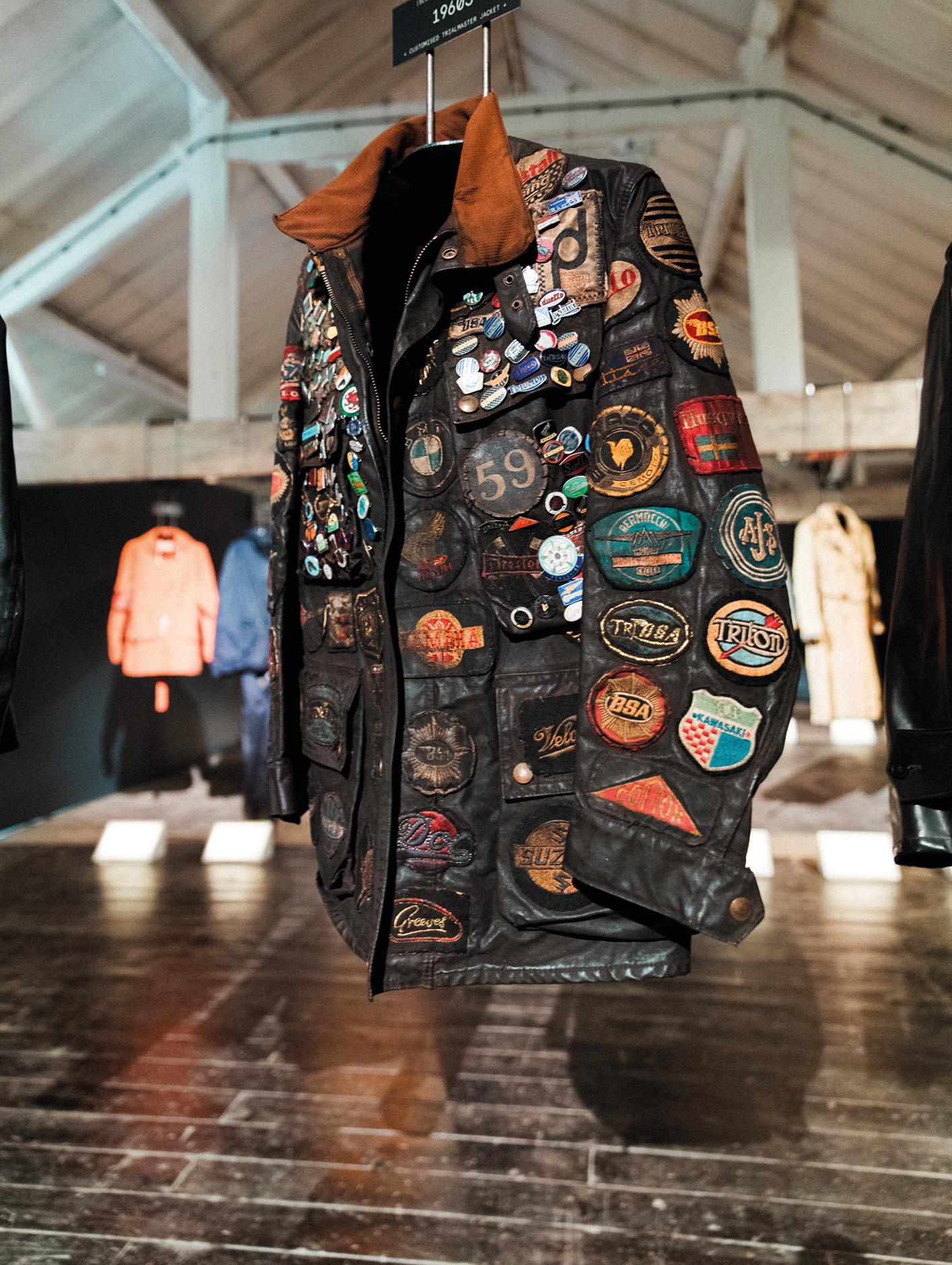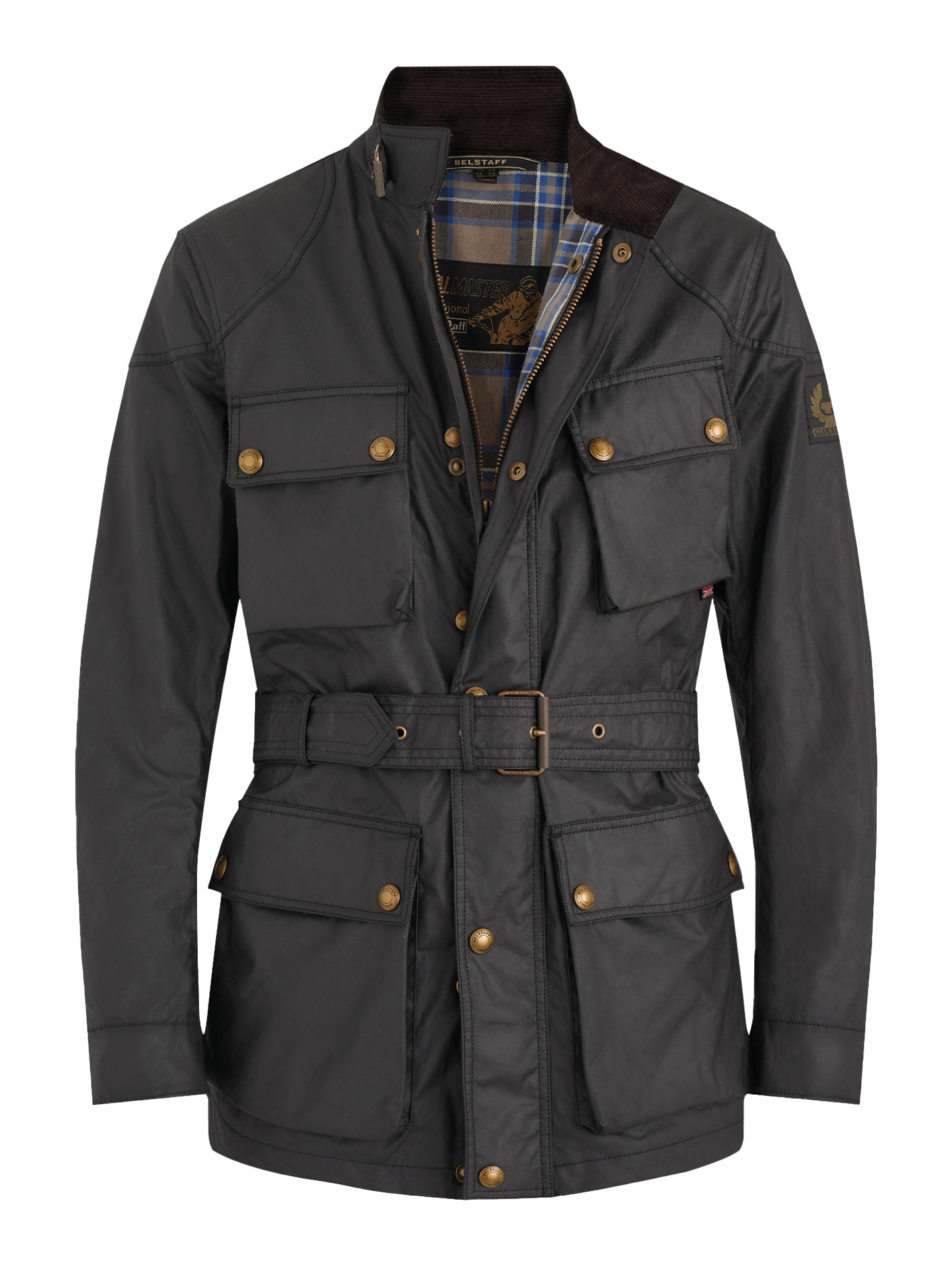WORDS
Simon de Burton
Eli Belovitch and his son-in-law Harry Grosberg really started something back in 1924 when they pioneered the production of no-nonsense weatherproof clothing made from old sailcloth and scrap tarpaulin. Little did they know that their Belstaff brand would still be going strong a century later, having transitioned from being known mainly to motorcyclists and outdoor types to becoming a fashion-world favourite. One of Belstaff’s signature creations is the waxed cotton Trialmaster jacket, a garment launched in 1948 and favoured by bikers for the next quarter of a century until the advent of lighter, easier to maintain, more water-resistant fabrics revealed its shortcomings.
But, as the millennium turned, a bit of smart marketing by new Italian owners made the Trialmaster jacket the height of waxed-cotton chic in many corners of the globe – helped by Kate Moss landing a (rumoured) £1m contract to advertise Belstaff products, the opening of stores in some of the world’s most fashionable locations and product placements in multiple blockbuster films.
Soon everyone from Angelina Jolie to Tom Cruise, Daniel Radcliffe to Leonardo DiCaprio was seen wearing Belstaff, putting it firmly back on the map – ripe for a further sale, in 2011, to the Labelux Group, which aimed to re-position it as a luxurious “English heritage” brand.

Since 2017, Belstaff has been owned by Sir Jim Ratcliffe’s Ineos Group, maker of the rugged Grenadier off-road vehicle, especially trimmed versions of which are named after some of Belstaff’s best-known designs. This year’s Belstaff centenary has not passed unnoticed, kicking off with a train ride for a couple of hundred friends, hacks and influencers to the brand’s Stoke-on-Trent birthplace. Undeterred by the fact that the original Belstaff building was bulldozed long ago, the brand organised a retrospective exhibition of its products in the suitably retro Gladstone Pottery Museum not far from the old factory site.
Through products, the exhibition traced the fascinating history of a true Brit clothing manufacturer that, before the market became flooded with cheaper foreign imports, really was the country’s go-to name for anyone looking for the right kit for serious adventuring. Laid out in chronological order within the old pottery’s dark and moody disused spaces, the exhibition harked back to some of the firm’s oldest surviving pieces.
Among these were well-preserved and valuable examples of the leather Senior TT Competition coat from the early 1930s and the wartime “Supersenia” four-in-one storm coat comprising a waxed-cotton outer, oilcloth interlining, cotton lining and detachable flannel lining. “Full weather protection combined with attractive design” was also offered by the Lincoln trouser suit for female motorcyclists of the ’50s, with the sheepskin-collared “Mackinaw” available for the decade’s committed hunting types.

And, while the Trialmaster jacket might be the best-known of Belstaff’s motorcycling products, the exhibition revealed many, many more pieces designed for bikers, ranging from waxed jackets in reds, greens and blues to the fully waterproof Stormshield jacket, one-piece racing leathers and the nylon Formula 750 of the 1970s.
Original ephemera, meanwhile, revealed Belstaff’s history as a maker of everything from tents to fishing waders and “rucsacs” (as they were called), with the displays also showcasing well-preserved waterproof coats, smocks, capes and anoraks designed for everyone from milkmen to air traffic controllers, mountain rescue teams to the military. Children of the ’70s were also reminded of Belstaff’s collaboration with British mountaineer Sir Chris Bonington that produced smocks, anoraks and mountaineering jackets bearing his name and logo.
But what was especially notable was that there only seemed to be about four people at the exhibition who fully appreciated the origins of Belstaff’s most famous product, the Trialmaster – me, motorcycling-mad fashion designers Nick Ashley and his daughter Edie, and seven-time outdoor world trials champion Dougie Lampkin. I suggested to Lampkin that most of the fashionistas present wouldn’t know a trials bike if one ran over their foot. ‘Aye lad,’ he responded in his buttery Yorkshire drawl. ‘You’ll be reet about that.’





